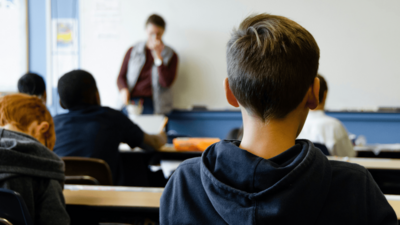Highly Effective Practices of a Resilient School

Schools today face unprecedented challenges. From academic pressures and technological change to the lingering impacts of the pandemic and the rise in student mental health needs, educational environments are complex and demanding. Yet some schools thrive in these conditions, not because they avoid adversity but because they practice resilience.
A resilient school adapts in times of adversity, stays grounded in its mission and creates a safe environment where both students and staff can flourish. Resilience isn’t about avoiding hardship; it’s about developing the capacity to recover, grow and support others along the way.
Practice #1: Building a Purpose-Driven Culture
Resilient schools are anchored in a shared mission and set of values. A clear sense of purpose helps students and staff alike stay focused, even during times of stress or uncertainty. A strong school culture fosters belonging, connection and hope. Students who feel they are part of something bigger than themselves are more likely to stay engaged and resilient when challenges arise.
Practice #2: Prioritizing Relationships
Research consistently shows that relationships are a powerful protective factor against adversity. Resilient schools intentionally cultivate trust and connection among students, teachers and families.
This includes practices like advisory periods, restorative conversations and mentoring programs that help students feel safe and supported. When relationships are strong, schools can better buffer the effects of trauma and stress on student learning.
Practice #3: Supporting the Whole Child
Resilient schools take a holistic approach, recognizing that students’ success depends on more than academics alone. Educators address the needs of the whole child – academic, social, emotional and physical – so that students have the skills and support to thrive in every area of life.
By focusing on the whole student, schools help children build resilience, manage stress and develop healthy relationships. Educators trained in trauma and resilience strategies are especially equipped to weave whole-child practices into daily routines, creating classrooms that nurture both learning and well-being.
Practice #4: Supporting Staff Well-Being
Teachers often carry the emotional weight of their students’ struggles alongside their own. Resilient schools acknowledge this reality and make staff well-being a priority. This may include wellness initiatives, peer support networks or simply fostering a culture where it’s okay to ask for help.
Leaders who model balance and self-care set the tone for sustainable, resilient teaching practices. A thriving faculty is key to a thriving school.
Practice #5: Creating Clear and Flexible Systems
Consistency and flexibility may seem at odds, but resilient schools balance both. Predictable routines and fair expectations provide students with a sense of stability, while adaptability allows educators to respond when circumstances change.
For example, during unexpected disruptions, schools with flexible systems can pivot to maintain learning and communication without losing sight of their larger goals.
Practice #6: Practicing Inclusion
Every student comes with unique strengths and challenges. Resilient schools actively work to ensure that all students, regardless of background, ability or life circumstances, have access to the resources and support they need. By prioritizing inclusion, schools not only meet individual needs but also build communities of compassion and fairness that benefit everyone.
Practice #7: Engaging Families and Communities
Resilient schools see families and communities as vital partners. Open communication, family involvement and connections with local organizations create a stronger support system for students. When schools, families and communities work together, they create a safety net that sustains resilience during times of stress.
Practice #8: Committing to Growth and Renewal
Resilient schools never stop learning. They embrace professional development, reflective practice and innovation. When challenges arise, they ask, “What can we learn from this?” For all schools, a growth mindset ensures that challenges become opportunities for improvement.
Resilient schools are not defined by the absence of hardship but by their ability to respond with compassion, adaptability and purpose. By focusing on relationships, staff well-being, whole-student practices and community partnerships, schools create environments where both students and educators can thrive, no matter the circumstances.
Concordia University, Nebraska’s M.Ed. in Curriculum and Instruction with a trauma and resilience emphasis prepares educators to create trauma-informed, inclusive schools where students can heal, grow and succeed.
Concordia Nebraska’s trauma and resilience certificate connects evidence-based practices with a Christ-centered understanding of resilience, equipping teachers and leaders to make a lasting impact.
Interested in Concordia University, Nebraska's trauma and resilience certificate?
Related Stories


